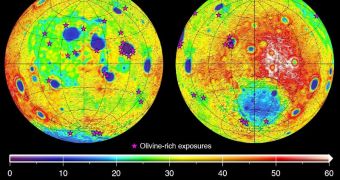Scientists from the Massachusetts Institute of Technology (MIT) have just published a new paper on the asymmetric distribution of impact craters on the surface of the Moon. The work is based on data sent back to Earth by two NASA spacecraft orbiting high above the lunar surface.
The new research will help scientists shed some more light on how the Moon received its distinct appearance, which has been fascinating humans for thousands of years. Details of the investigation were published in this week's issue of the top journal Science.
According to data collected by the NASA Gravity Recovery and Interior Laboratory (GRAIL) spacecraft, it would seem that both the near and far sides of the Moon were bombarded by numerous impactors over the years. However, each side exhibited its own reaction to these battering events.
Most of the larger impact craters were produced during a period called the Late Have Bombardment, which occurred between 4.1 and 3.8 billion years ago. This event is thought to have brought vast amounts of water and organic molecules on Earth, from comets in the Oort Cloud.
Since most of the craters on the near side of Earth's natural satellite are covered in lava flows, researchers have found it very hard until now to establish their age and composition with precision. GRAIL helped them overcome this issue, by measuring the internal structure of the Moon.
The highly-detailed lunar map the twin spacecraft created shows a higher concentration of impact craters on the near side of the Moon, even though some are completely obscured by newly-formed crust. Astronomers are currently working on a way of explaining how this happened.
“Impact simulations indicate that impacts into a hot, thin crust representative of the early moon’s near-side hemisphere would have produced basins with as much as twice the diameter as similar impacts into cooler crust, which is indicative of early conditions on the moon’s far-side hemisphere,” says Katarina Miljkovic.
The expert, who is based at the Institut de Physique du Globe de Paris, was the lead author of the new study. The research group concluded that the impacts and craters plaguing the far side of the Moon provided more accurate clues as to the effects of the Late Heavy Bombardment than similar structures on the near side of the Moon.
“GRAIL data indicate that both the near side and the far side of the moon were bombarded by similarly large impactors, but they reacted to them much differently,” says MIT expert and GRAIL principal investigator Maria Zuber.

 14 DAY TRIAL //
14 DAY TRIAL //